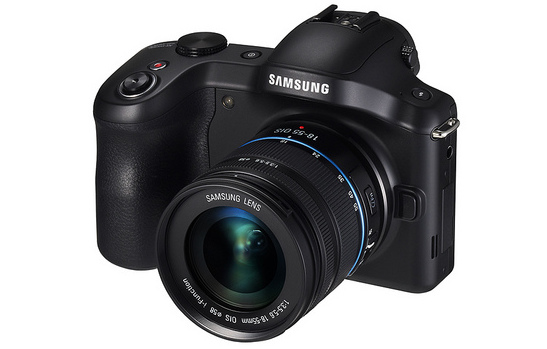Until a few years ago, people would have looked at you very oddly if you said you were taking a picture with your phone. Today, a lot of people have all but forgotten that there is any other way to take pictures.
But for people who are serious about their photo shots, a real camera is still a must. And thanks to Samsung’s Galaxy NX camera, there is now a full-featured interchangeable lens camera (ILC) that runs on the Android mobile operating system. Which means that photographers can stay connected, and make direct use of Android apps, even as they work with their camera.
Just don’t try to make phone calls with it.
Appeal to Serious Photographers
As Lori Grunin suggests at CNET, the Galaxy NX camera may be the first “connected” camera that will have real appeal to serious photographers. Phone cameras are fine for casual snapshots, but they provide minimal control over images, let alone the ability to change lenses.
Says Grunin, for those who wanted the connectivity of the Samsung Galaxy camera, but with higher image quality and more photo capabilities, the Galaxy NX might well fit the bill.
Specifications include a 1.6GB quad-core processor, along with 16GB of built-in memory, and the same DRIMe IV image processor that is used in Samsung’s NX 300. As compared to the Galaxy camera, the Galaxy NX camera also has increased battery life, and a place to rest your left thumb.
Downsides, for some users, may be the substantial physical bulk of the Galaxy NX camera. But this is perhaps inevitable, given that it has a 4.8-inch LCD, and that some of the best lenses for it are also fairly big and heavy. Given its size, however, use of MicroSD cards, tucked “inconveniently” into the battery compartment, is perhaps not ideal.
The camera also lacks physical controls, and some users may not feel that i-Function controls are a full substitute for hands-on controls. Yet, says Grunin, this is the first camera where these controls seem to make sense.
Android, Plus Open-Source APIs
In addition to building the Galaxy NX camera around the open-source Android operating system, Samsung has also made the decision to open-source the camera-specific application programming interfaces (APIs) needed to drive the camera. And while Grunin admits to not being “completely sold” on Android cameras, she acknowledges that the combination of Android and open-source APIs “really opens up the potential of the camera in ways I can’t begin to imagine.”
This perhaps sums up the most interesting thing about an Android camera: The Android development community will now set to work creating new possibilities for it.
[cf]skyword_tracking_tag[/cf]

